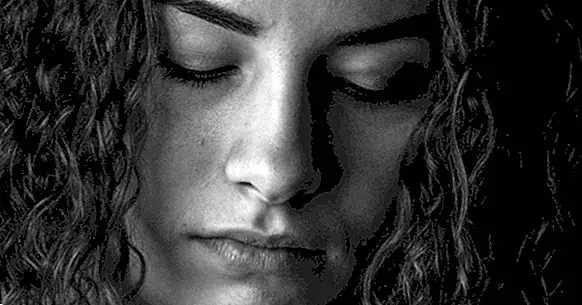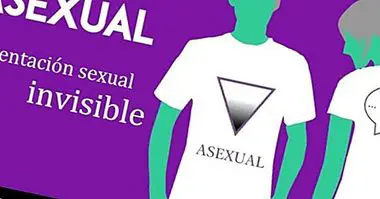Vulvodynia: types, symptoms, possible causes and treatment
Diseases or conditions related to intimate areas, both men and women, are still considered a taboo in our society. What causes that people suffering from a condition of this type live in silence and are very reluctant to seek professional help.
One of these conditions is vulvodynia , a disease that affects the vulvar area that can end up being highly incapacitating for the person who suffers due to the pain it causes. In this article we will discuss the different types of vulvodynia, as well as its symptoms, causes, treatment and how to prevent it.
- Related article: "How to be a sexologist? Indications, training and advice"
What is vulvodynia?
The term vulvodynia refers to a vaginal condition of causes that are difficult to determine and that are characterized by causing chronic pain and discomfort in the vulvar region. This type of discomfort can manifest itself in the form of a burning sensation or in the form of pain, to the point of causing a vulvar swelling effect.
The intensity and severity of symptoms may vary from one person to another. These symptoms can appear both constantly and sporadically but recurrently. In addition, sensations can be located at specific points of the vulva or be a generalized or diffuse discomfort. Finally, the intensity of these can range from a slight discomfort, even a stinging and really disabling pain for the person who suffers.
In addition, these symptoms can also change over time in the same person. As a general rule, pain tends to accentuate at nightfall, as well as with menstruation, stressful periods or in cold and humid environments.
So that it can be considered as a diagnosis of vulvodynia, the symptoms must remain for more than three months , may appear suddenly and without any apparent cause. At other times, the pain is caused by a mild stimulus that does not usually correspond to the degree of pain experienced. This stimulus can be from a light touch, the mere fact of walking or performing some type of exercise or inserting a tampon.
As a result of the great discomfort in the vulvar area, the person may become unable to perform certain types of activities, such as riding a bike. Above all, create big problems when having sex , since the sensation of pain makes any kind of intimate contact very difficult and annoying.
As a curious fact, throughout history, the inability to find physical causes of vulvodynia, caused it to be considered a psychosomatic disease of women caused by high levels of anxiety and stress. This made vulvodynia something like a mental condition, so the patients refused to ask for help.
Different types of vulvodynia
As pointed out above, vulvodynia can occur in several ways , varying both the location of the symptoms and the intensity of these. This makes it possible to distinguish different types of vulvodynia, which are known as dysesthetic or generalized vulvodynia, and vestibulitis vulgaris syndrome or localized vulvodynia.
1. Dysesthetic Vulvodynia
This first classification of vulvodynia is characterized because the symptoms are manifested in a generalized manner, that is, they extend throughout the entire vulvar area. These discomforts may appear discontinuously or constantly, and may not be caused by any type of stimulus or as a response to any type of pressure or chafing.
In some cases, the pain is accompanied by skin changes in the perineal area as redness, as well as rectal and urethral problems or muscle spasms in the area of the pelvic floor.
2. Vestibulitis vulgaris syndrome
Localized vulvodynia, clinically known as vestibulitis vulgaris syndrome, is the most common of both classifications. In these cases, the pain it appears in localized areas, but more usually in the area surrounding the vagina (lobby). This discomfort, in the form of pain or burning, can manifest itself suddenly and without apparent cause or by the contact or pressure of some stimulus.
Although it does not occur in all cases, this condition of the vulva may be accompanied or produced by other physical alterations such as different types of cystitis, irritable bowel syndrome or even fibromyalgia.
What symptoms does it present?
Although, as already mentioned, the symptoms of vulvodynia may vary between one patient and another , there are certain common signs of this condition that occur in all of them.
These symptoms are manifested in pain or burning sensation accentuated in the area of the vulva, which may extend to the urethra, clitoris or anar area. The discomfort can become so serious that the person experiences a severe sense of abrasion , appearing small lesions or cuts in the affected area. The rest of symptomatology can include:
- Severe vaginal dryness accompanied by itching.
- Stinging sensation in the affected area.
- Pain similar to that caused by a shock or electric shock.
- Pain similar to the one that would cause a blow to the affected area.
- Anal or rectal pain
- Increase in pain when performing certain activities such as sitting or riding a bike .
The form and severity with which these symptoms occur may affect the quality of life of the person. In addition to being incapacitante at the time of maintaining any type of intimate or sexual relationship. This interference with daily life can lead to great feelings of frustration that can even lead to severe depressive disorder.
What are the causes?
For the moment, the causes of vulvodynia remain unknown. However, it is hypothesised that the repeated disease of inflammatory infections It can be the main trigger of this condition.
These infections can be caused by an intimate hygiene deficit, by the contact with certain chemical products or synthetic fabrics . As well as physical activities or excessively intense sexual relationships, among many others.
The main causes that have been related to vulvodynia are:
- Injuries or inflammation of the nerves that surround the vulvar area.
- Vaginal infections
- Allergies or reactive skins .
- Hormonal alterations
- Weakness of the pelvic floor .
Is there a treatment?
Due to the complexity and lack of information about this condition, an effective treatment for vulvodynia that manages to permanently remit symptoms has not yet been developed.
However, there are treatments focused on relieving the severity and recurrence of symptoms. In addition, they are focused on the particular characteristics of each specific case of vulvodynia. For this purpose, a combination of different types of therapeutic interventions among which we can find:
- Pharmacotherapy using steroids, tricyclic antidepressants or anticonvulsants to relieve pain, and antihistamines for itching.
- Biofeedback therapy by which the person learns to relax the pelvic muscles and reduce pain.
- Local anesthetic medications .
- Nervous blockers
- Pelvic floor exercises.
- Surgery to remove areas of affected tissue (only in the most severe cases).
How can it be prevented?
Since the exact causes are not known, it is not very reasonable to ensure that it can be prevented. However, there are a series of measures that people can take to reduce the chances of occurrence or, in the case of suffering it, decrease the intensity of discomfort . Among these recommendations of hygiene and behavior are:
- Use cotton underwear , to be able to be white.
- Wear comfortable clothes and little adjusted.
- Wash with soft intimate soaps and without perfumes. In the case of washing very often, use only water.
- Avoid the continued use of compresses or panty liners. Better resort to 100% cotton absorbers.
- Do not hold urine.
- Use water-based lubricants and as natural as possible.
- Avoid physical exercises that imply friction or continuous friction of the vulvar area.
- If after sexual intercourse or urination experience discomfort, apply cold compresses or refresh the affected area.



















